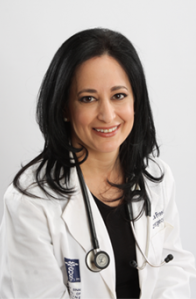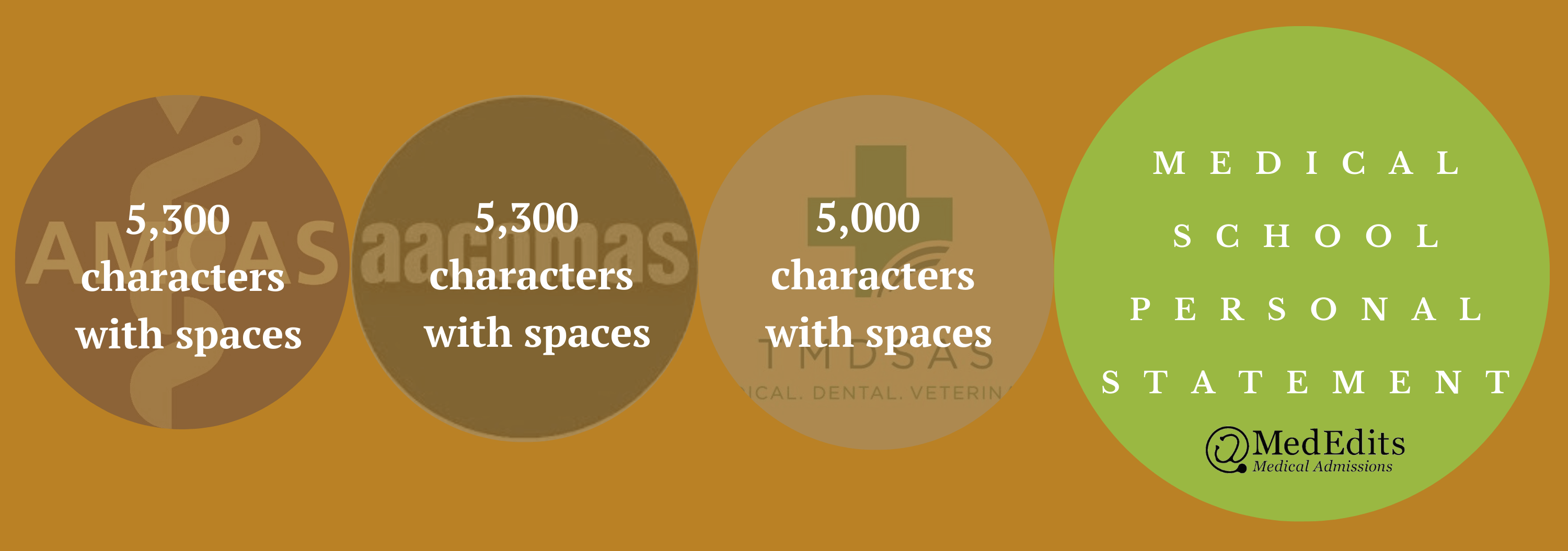
Introduction
If you are reading this article you likely have a few questions in mind:
- What kind of medicine does a DO practice?
- Is it less competitive to get in to a DO vs. MD program?
- Will my medical education be different as a DO?
- Will my residency training and career options be limited as a DO?
- Are an MD and a DO really equal or is one “better?”
For those interested in becoming a physician, there are two different paths that one can take: training and a career as an MD or Allopathic physician or training and a career as DO or Osteopathic physician. Generally speaking, MD trained physicians are more prevalent in modern medicine, but DO trained physicians are becoming more commonplace, with new Osteopathic medical schools cropping up across the United States. Having worked with both DO and MD physicians, I can tell you there is little differentiation when it comes to medical practice in the “real world” between the two! As an allopathic physician, I have worked alongside DO physicians in both academic and community environments. But when determining what path to take in your medical training, it’s worth exploring: What is the difference between MD and DO educated physicians and will your career options be different? (Short answer: Yes.) Will it be tougher for me to get into a more competitive specialty as a DO? (Short answer: Yes.) Read on to learn more……
Having worked with both DO and MD physicians, I can tell you there is little differentiation when it comes to medical practice in the “real world” between the two!
What is a DO vs MD?
First, let’s review some basics about a DO vs. MD
What does DO Stand For?
DO stands for Doctor of Osteopathic Medicine. You can only earn this degree from osteopathic medical schools in the United States. Therefore, if you see DO after a doctor’s name, it means they graduated from an osteopathic medical school.
Osteopathic medical schools are accredited by The Commission on Osteopathic College Accreditation of the American Osteopathic Association.
What is an MD?
MD stands for Doctor of Medicine and is the degree offered by all allopathic medical schools.
Allopathic medical schools are accredited by the Liaison Committee on Medical Education of the Association of American Medical Colleges.
Now let’s look at some basic comparisons between DO and MD which are discussed further in the article:
DO vs MD Similarities
Both degrees, a DO or MD, allow you to practice medicine and surgery in the United States.
- DO and MD schools have the same medical school requirements.
- DO and MD schools both require the MCAT.
- Medical school for both DO and MD is four years.
- DO and MD students both apply for residencies accredited by the Accreditation Council for Graduate Medical Education.
DO vs MD Differences
- Ideally, DO applicants should shadow an osteopathic physician from whom they receive a letter of reference.
- DO medical students receive 200 hours of education in osteopathic manipulative therapy (OMT).
- DO students may need to take two standardized exams during medical school – the COMLEX and the USMLE – depending on the residency and specialty they hope to pursue.
- DO students may not be as competitive for the most selective specialties and residency match.
- DO graduates gravitate towards primary care fields and do not specialize as much as MD graduates.
- DO graduates can only practice in the U.S. whereas MDs can practice world-wide. This is especially important for applicants interested in global health.
- There are 157 allopathic (MD-granting) medical schools in the U.S. and 38 osteopathic (DO-granting) medical schools in the U.S.
DO vs. MD: Historical Perspective

While both Osteopathic and Allopathic physicians are medical doctors, there are some differences in education and training that set them apart from one another, primarily the practice of Osteopathic Manipulative Treatment (OMT).
OMT was originally conceived as a form of medical treatment in the 19th century by Dr. Andrew Taylor Still, the founder of osteopathy and the American School of Osteopathy in 1892 (now A.T. Still University in Kirksville, MO). OMT is a set of hands-on techniques used to treat, diagnose, and prevent illness and/or injury that involve stretching, gentle pressure, and resistance.
Some of the more common problems treated through OMT are asthma, sinus disorders, and migraines, as well as some musculoskeletal problems like lower-back pain. Along with standard medical education, OMT is taught exclusively in osteopathic medical schools, and is used as a complement to – or in some cases, a replacement for – some drug or surgical therapies.
DO vs MD: Is it Easier to Get into Osteopathic Medical School?

The primary factor that determines your competitiveness for DO versus MD schools will depend on your MCAT and GPA.
Because the average MCAT and GPA are lower for osteopathic medical students, it is the “easier” option if your stats are not high. Many medical school applicants apply to osteopathic medical schools if they are not competitive for MD medical schools.
To determine your competitiveness, consider the most recently reported average GPAs and MCATs for DO and MD medical school matriculants which are listed below.
MD Medical School Average MCAT and GPA for Medical School Matriculants (2023)
| Average MCAT: | 511.9 |
|---|---|
| Average GPA: | 3.75 |
DO Medical School Average MCAT and GPA
| Average MCAT: | 503.8 |
|---|---|
| Average GPA: | 3.54 |
As you can see, the stats for allopathic medical schools are much higher than those for osteopathic medical schools. Therefore, your decision of where to apply should, in part, depend on your overall competitiveness.
Many students apply to both allopathic and osteopathic medical schools simultaneously.
DO vs MD Medical School Application Differences

There are two application services for MD and DO medical schools.
When applying to MD or allopathic medical schools, students must complete the American Medical College Application Service (AMCAS) application which requires a 5300 character personal statement and application entries.
When applying for DO or osteopathic medical schools, students must complete the American Association of Colleges of Osteopathic Medicine Application Service (AACOMAS) application which also consists of a 5300 character personal statement and application entries.
Since most osteopathic medical schools have a secondary essay with the prompt, “why osteopathic medicine?” most students us the same personal statement for both allopathic and osteopathic systems.
Both application services open in May, but, the AMCAS application can be submitted in June whereas the AACOMAS application can be submitted in May when the system opens.
Summary of major AMCAS and AACOMAS application components:

AMCAS
- Personal Statement: 5,300 characters
- Work and Activities Entries (up to 15): 700 characters
- Most Meaningful Entries (up to three): 1,325 characters
When preparing medical school, the admissions process doesn’t vary to much of a degree.
Individual schools may place specific requirements on applicants in order to be considered for admission (certain number of letters of recommendation, preferred extra-curricular activities, etc.) but generally speaking, admission requirements between osteopathic and allopathic schools are identical.
Both will require the completion of the Medical College Admission Test (MCAT), and the completion of biology, physics, and chemistry courses.
The only notable difference between admission practices of the two schools is that osteopathic schools tend to place heavier weight on whether or not an applicant has participated in an observership or shadowing opportunity with an osteopathic physician.
We therefore recommend all osteopathic medical school applicants shad an osteopathic physician and request a letter of reference from that physician.
DO vs. MD: School Differences

The general philosophy behind Osteopathic training is also different than that of their Allopathic counterpart; the focus of Osteopathic medicine is to look beyond symptoms and examine the patient as a whole.
The largest difference between allopathic and osteopathic medical education is that osteopathic medical students are required to take 200 hours of osteopathic manipulative treatment (OMT) during medical school.
During a patient interaction, emphasis is placed on performing thorough physical exams, using touch and OMT to help diagnose and provide treatment. There is also a large focus on primary care in osteopathic medical schools and career choices and options reflect this (see below).
DO vs MD Career Options
Aside from the differences in training practices, Osteopathic physicians are significantly less prevalent than Allopathic physicians. Allopathic medical schools span the globe and can be found in nearly every country. On the other hand, Osteopathic medical schools are only in the United States, totaling 36 osteopathic medical schools.
Osteopathic physicians currently comprise 11% of the physician population as of 2023 and 25% of all current medical students in the U.S. according the American Osteopathic Association. With new Osteopathic medical schools being established, these percentages are likely to increase as time goes on.
Related Article: Average Medical School MCAT Scores (By School)
DO vs. MD: Differences in Standardized Testing

Within medical school, both Allopathic and Osteopathic students must complete a series of exams in order to progress and ultimately graduate.
Osteopathic medical students must complete the COMLEX exam to graduate.
However, and this is important to note, to be competitive for the most selective residency programs and specialties, graduates must also sit for the the United States Medical Licensing Examination (USMLE).
Allopathic medical students only take the USMLE.
Both series of exams are designed to assess a student’s medical knowledge, concepts, and principles, with the COMLEX also assessing Osteopathic knowledge and skills.
While each student must complete their respective exams in order to graduate and move on to their post-graduate training, Osteopathic students have the unique opportunity to also complete the USMLE alongside the COMLEX if they so choose.
The results of these exams can impact an applicant’s competitiveness for residency, so participating in both exam series can either be markedly beneficial or hindering depending on the final scores.
Traditionally allopathic residency programs will often only take the USMLE whereas traditionally osteopathic programs will only take the COMLEX. Therefore, osteopathic students should take both exams if they want to have the most options when applying for residency.
It was announced on February 12th, 2020, that the USMLE Step 1 will become a pass/fail test in 2022. While some advocates say this will decrease overall stress for medical students, many say the burden is just shifting to the USMLE Step 2 which is not pass/fail.
It is not clear as of right now how this shift to pass/fail will impact residency selection.
DO vs. MD: Differences in Residency Specialties, Training, and Match Rates (2022-2023)
As of the 2020 academic year, all DO and MD medical students will participate in the same process to secure positions in residency programs across the United States that are accredited by the Accreditation Council for Graduate Medical Education. This means that Allopathic and Osteopathic students will technically be competing for the same spots, where before there were specifically designated Allopathic and Osteopathic residency programs.
Because of this change in the post-graduate environment, there are some concerns about the ability for the two disciplines of medical students to compete for residency positions on a level playing field; however, the overall spread of medical students as a whole likely will not change as a result.
Historically, osteopathic programs are more likely to interview and match osteopathic students, and a number of these students were already able to secure positions at historically Allopathic programs.
According to the National Residency Match Program (NRMP), 91.6% of osteopathic medical students successfully placed into a PGY1 position in 2023 versus 93.7% of allopathic students.
Keep in mind that the specialties and programs these two groups match into are quite different, however.
Ultra competitive specialties, such as otolaryngology, orthopedic surgery, and dermatology to name a few, are very competitive for all applicants and even tougher for osteopathic residency applicants. Review the National Residency Matching Program residency match data here.
Nearly 20% of osteopathic medical students pursue careers in family medicine. Why? In part this specialty is well-aligned with osteopathic principles and because matching in to more competitive specialties is very difficult.
The top five specialty tracks for osteopathic medical students last year were:
- Internal medicine: 1,688
- Family medicine: 1,511
- Emergency medicine: 730
- Pediatrics: 608
- Psychiatry: 403
The percentage of osteopathic students who matched in to five of the most competitive specialties were:
- Otolaryngology: 23
- Orthopedic surgery: 119
- Dermatology: 5
- Neurosurgery: 3
- Radiation oncology: 0
As you can see, a small number of osteopathic medical students comprise the most competitive specialties in medicine so an osteopathic degree may limit the specialties you can pursue.
DO vs. MD: Medical Practice and Career

In the end, the differences between both allopathic and osteopathic physicians do not get in the way of the primary purpose of the profession: providing quality care to their patients. Both physician disciplines are equally capable of providing care in any environment, whether it’s the operating room, the hospital floor, the emergency room, the urgent care facility, or the private office. In fact, most allopathic and osteopathic physicians practice in the same way.
DO vs. MD Salary
DO and MD graduates make similar salaries across specialties. Ultimately, a physician’s salary depends less on the degree and more about the chosen specialty. MD physicians are more likely to earn higher salaries overall, but, this is because more allopathic medical school graduates tend to specialize and pursue the most lucrative specialties in medicine.
A higher percentage of DO physicians practice in lower-earning primary care specialties.
Final Thoughts
When sitting down and deciding which medical career path to take, take into account the differences between the two medical educations and your competitiveness for each path. Think about your future goals, career, and salary ideals.
You can have a fulfilling career in both education tracks.




